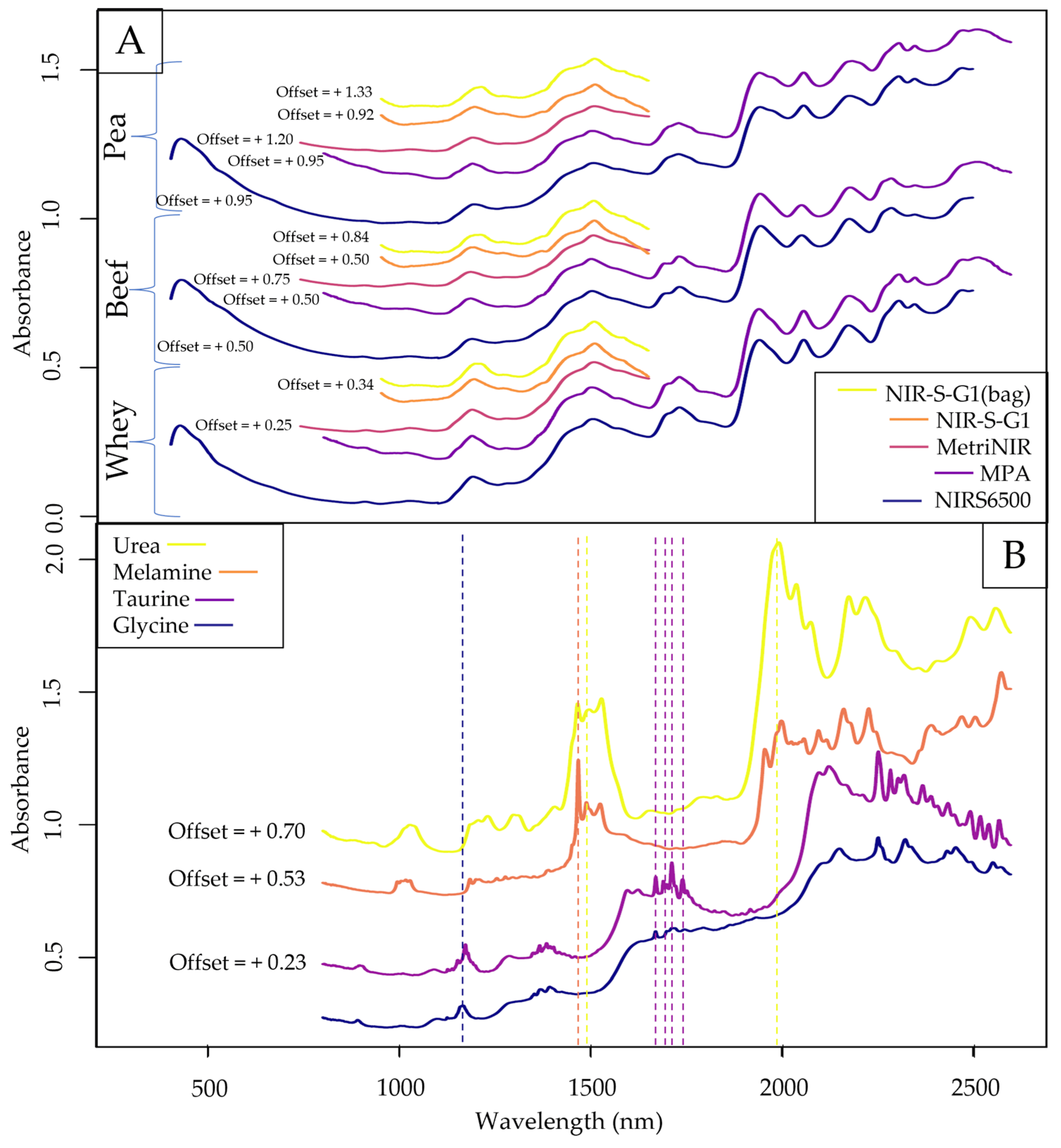Based on our previously published results, we tested various protein powders contaminated with adulterants with a high nitrogen content using NIR spectrometers operating on different principles. Through comprehensive chemometric analyses, we present the effectiveness of each device on this complex sample set. The results published in the journal Molecules, in collaboration with our Austrian and Ghanian colleagues and colleagues at the Hungarian University of Agriculture and Life Sciences (MATE), are convincing for both desktop and hand-held spectrometers, and open serious prospects for fast and reliable quality control of high-protein food and feed supplements.
Comparison of multiple NIR spectrometers for detecting low-concentration nitrogen-based adulteration in protein powders
Matyas Lukacs, John-Lewis Zinia Zaukuu, George Bazar, Bernhard Pollner, Marietta Fodor, Zoltan Kovacs
Protein adulteration is a common fraud in the food industry due to the high price of protein sources and their limited availability. Total nitrogen determination is the standard analytical technique for quality control, which is incapable of distinguishing between protein nitrogen and nitrogen from non-protein sources. Three benchtops and one handheld near-infrared spectrometer (NIRS) with different signal processing techniques (grating, Fourier transform, and MEM—micro- electro-mechanical system) were compared with detect adulteration in protein powders at low concentration levels. Whey, beef, and pea protein powders were mixed with a different combination and concentration of high nitrogen content compounds—namely melamine, urea, taurine, and glycine—resulting in a total of 819 samples. NIRS, combined with chemometric tools and various spectral preprocessing techniques, was used to predict adulterant concentrations, while the limit of detection (LOD) and limit of quantification (LOQ) were also assessed to further evaluate instrument performance. Out of all devices and measurement methods compared, the most accurate predictive models were built based on the dataset acquired with a grating benchtop spectrophotometer, reaching R²P values of 0.96 and proximating the 0.1% LOD for melamine and urea. Results imply the possibility of using NIRS combined with chemometrics as a generalized quality control tool for protein powders.

Access the full paper free of charge on the website of the journal:
